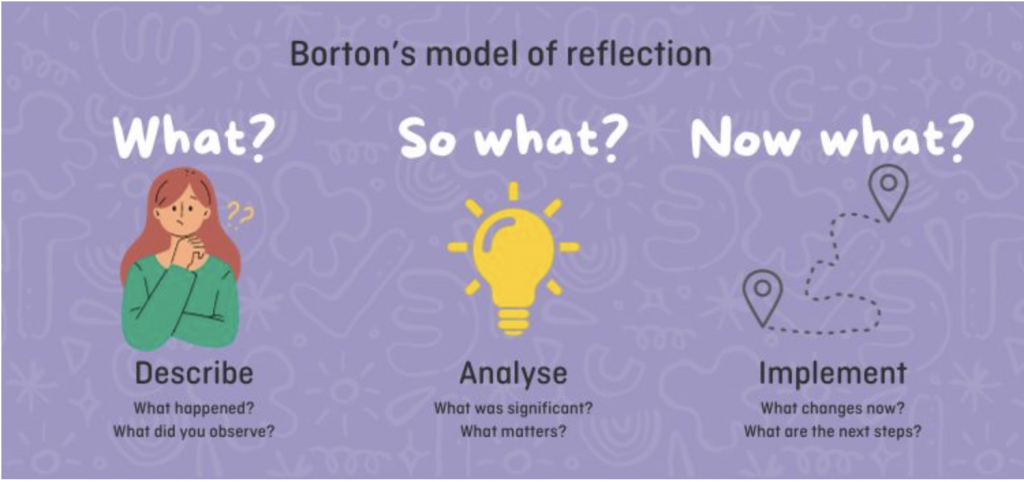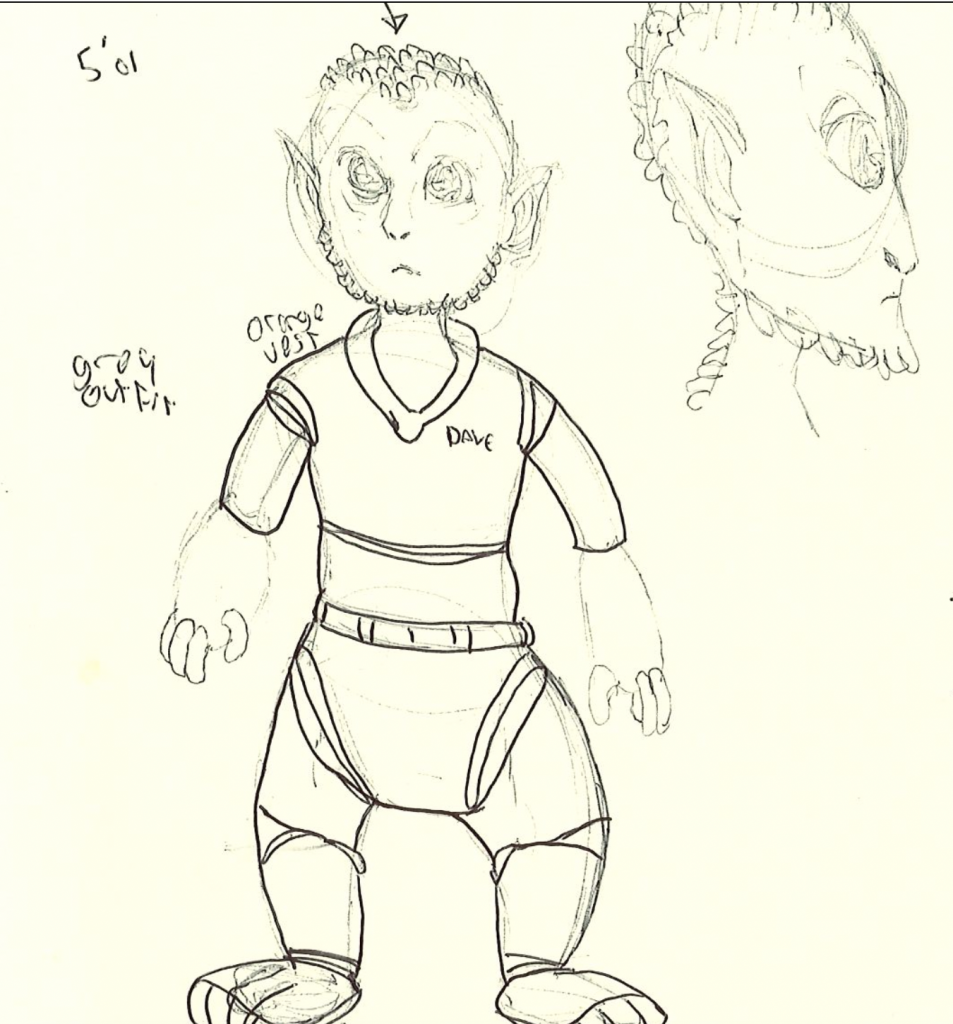I faced the ultimate challenge during my placement at Action Mental Health. I will be using Borton’s model from 1970 as summarised in Jasper 2013 as a tool to help me reflect upon this time.
This reflective model is broken into three aspects; “What?” which entails a description of the events. “So what?” which entails an analysis of what I did to tackle the problem and how well I felt I did finding the solution. Final aspect is called “Now what?” which entails a description of what I intend on doing going forward.

What?
Action Mental Health were facing an issue of getting clients to attend class regularly. Funding is provided by Belfast health and social care trust and is directly linked to the attendance of the clients. So, a lack of engagement by clients, affects funding but it also diminishes the hope of their recovery. The more often they attend, the better chance they have of developing personal skills, connecting with people and improving on their mental health and being able to integrate back into society and lead a good, healthy life. Hence, it is incredibly important to help them find reasons to regularly attend the service.
I found, like many other members of the team, that I was not getting consistent attendance from all members of the group for my creative writing class. As you can imagine, this impeded the progress of the group and hindered the members achieving their desired goals. I decided after the Christmas holidays to devise a new class and try a new technique to encourage people to attend.
So What?
I decided to let the clients devise the course themselves. I called it “Screenwriting and Drama” and it caught the interest of many people. On the first day of the class I laid out multiple ideas I had for what the course could entail. The clients chose the ideas they liked best and offered their own. The new course curriculum is designed to be fluid so it can change with what the clients would like to focus on each week, but the primary structure is that one week as a group we focus on writing a scene and next week to act it out and build upon previous week’s work. This way of devising the course has helped empower the group members to be more invested in the group and what is happening in the class. And this has had a very positive affect on the client’s personal confidence and self-esteem.
However, as the course is fluid and will naturally change from week to week as the client’s ideas change and develop, it is important for me to reflect upon each client’s learning outcomes every week and for the group as a whole and adjusting them accordingly. This is so I can keep track of each client’s personal improvement and the group, but also to gently push them a little bit further every week and show them what they are capable of even when they didn’t originally believe it themselves.
Now all clients are excited every week to come back and further develop on ‘Dave the Alien’. In our latest class, we focused on character development. Each person takes a character from the scene and writes up their backstory and draw a picture of what they think they may look like. Then, we all pull our ideas together and choose what we think would create the “ultimate” character each time.

Here is an example of what the group agreed Dave the Alien would look like
I looked again at the environment the class was being taught in and at what may be causing barriers to the attendance. One of the barriers was increased levels of anxiety. One of the ways to dispel this anxiety was by having more space so individuals can sit further apart and therefore have more personal space. I consulted with the team and we agreed a room swap with another on going group. This new room is the largest in the building and is also more separate from the office space, giving us more privacy which encourages the shyer clients to have a go at acting and partaking in discussions. This room change had the desired effect, as group members felt more relaxed and at ease and has helped increase regular attendance.
Another step I took to help the clients in achieving more consistent attendance was to move the start time of the class to an hour earlier which extends the class time. This give us more of a chance to get through ideas at a slower pace which feels more manageable for many of the clients. I have also included more and longer breaks within the class, during which I encourage discussions about latest books and films which often spirals into long conversations between clients and myself. These interactions have helped us as a group to bond together.
Coming from a background of suffering with severe anxiety myself, I understand the importance of feeling in control of my environments. I always let clients come and go during class time as they please, to bring food and drink into the room, be on their phone or laptop, doodle, wear earbuds, listen to music or simply observe what is happening with no expectation to partake. Through adopting these techniques, I have seen a marked improvement in many of the clients suffering with anxiety. As the weeks have passed, many of them have been attending every class and for longer periods of time before feeling the need to step out, they have been partaking in group work and increased in speaking during class discussions.
The clients are now able to come into a group they enjoy, during which everyone is happy and laughing and therefore they are totally relaxed and feeling good when they leave. This class, for many of the clients, is the one time during the week they experience social interaction and so, it is vitally important that it is a positive experience.
“we remember much of our experiences of participation in embodied form. This means the experience of participation are remembered in our muscles, senses and actions…”
Kelly, P. (2011) Unconsidered activity, craft expertise and reflective practice in teaching. Reflective practice [online] 12(4) 557-568.
Now, after all this change, I have a large number of people consistently attending my class every week. And it is now in the top five most frequently attended classes for this term at Action Mental Health.
Now What?
The group has decided they want to work towards acting out the scene in their penultimate week. My idea, which some of them liked, was to film the scene and on their final week to screen the film in Action Mental Health. Everyone in involved in making the story and all of the team can come and watch it while having snacks and soft drinks.
Therefore, moving forward, we will write the next part of the scene together in class, now everyone has a better understanding of what direction the story is going to go in. Then, as a group, we will decide who will take on which character within the scene and begin to properly to stage the scene.
What this challenge has taught me is the importance in discussing with others their ideas, wants and expectations before devising courses. But also understanding barriers and difficulties others may have and how simple it can be in helping people achieve their goals by changing something as simple as the room the class was conducted within.
Nothing’s difficult. Everything’s a challenge. Through adversity to the stars. From the last plane to the last bullet to the last minute to the last man – we fight. We fight! We fight!
DAVID OYELOWO– Joe ‘Lightning’ Little
Bibliography
Jasper, M. (2013) Beginning reflective practice. 2nd ed. Melbourne;: Cengage Learning
Kelly, P. (2011) Unconsidered activity, craft expertise and reflective practice in teaching. Reflective practice [online] 12(4)